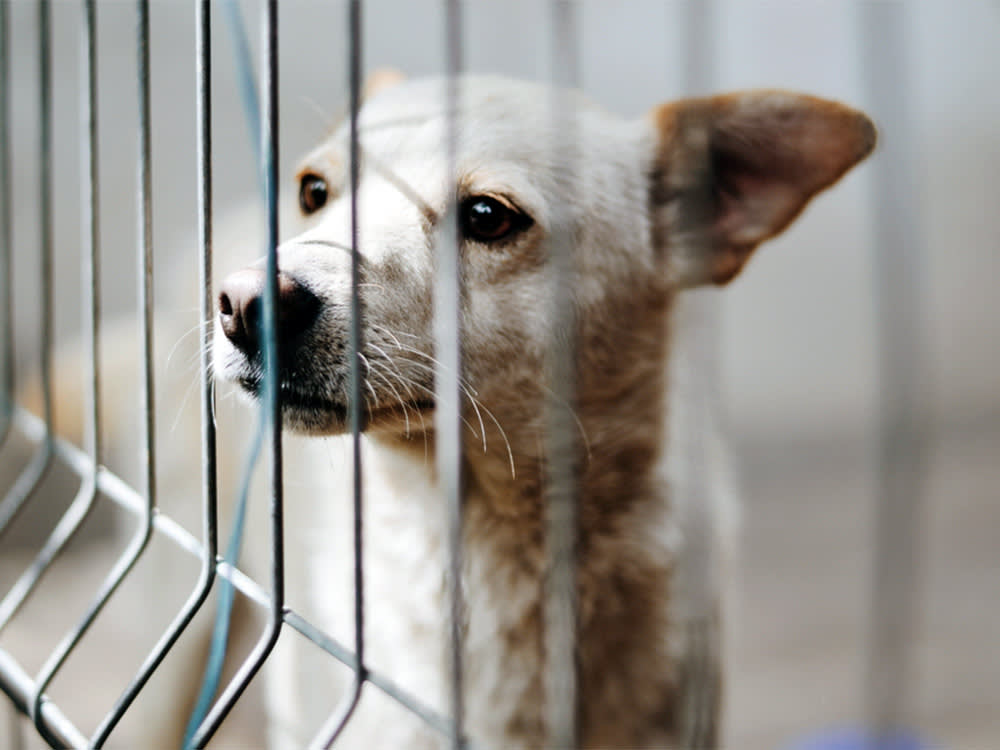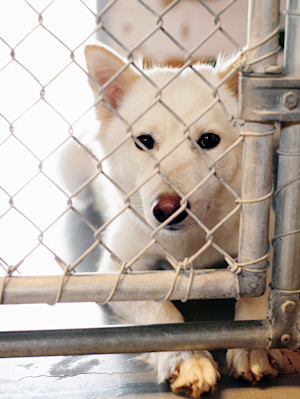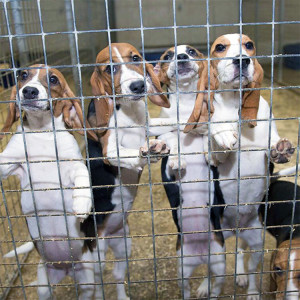PETA Investigation Finds Major Blood Bank Abuses Its Animals
One of the largest blood providers in America is inhumane to its animals and potentially poisonous to those who have received its product.
Every now and again, a story comes along that restores your faith in humanity and its larger imprint on the world. This is not one of those stories. If anything, I feel as though this bit of news should start with a trigger warning for those with weak stomachs. Earlier this year, an undercover PETA investigation discoveredopens in new tab that The Veterinarians Blood Bank opens in new tab(TVBB) has been abusing their animals for years, as well as shipping off potentially dangerous blood to vets across the country.
First reported byopens in new tab The New York Post in January, PETA’s investigation found approximately 900 cats and dogs living under atrocious and inhumane conditions at the TVBB facility. Treated more like crops than living creatures, these animals were provided with nothing beyond the absolute bare minimum required to keep them breathing and pumping out blood.
Every three weeks, they have up to two cups of blood extracted, a number far exceeding most donation standards and veterinary recommendations. Outside of these sessions, they’re left in overcrowded, undersized, and woefully ill-equipped kennels where they’re confined for over 23 hours every day.
Life maintained only by the vaguest definition of living
The roughly 360 dogs are only let out of these cages while they’re being cleaned. According to the PETA investigation, on Sundays when no cleaning is scheduled, they aren’t let out at all. These dogs are victim to constant deafening noise as they’re left with little options beyond endlessly barking out for help. With little to no bedding, they’re forced to sleep on hard plastic floors that have sometimes caused noticeable sores across their bodies per the report.
How much do you spend on your pet per year?
For the around 500 cats in their custody, the staff forces them to compete for food and water. They share pens with as many as 30 other cats and have no accommodations outside occasional cardboard boxes and milk crates. They must even fight for access to the facility’s plastic kiddie pools of litter, which weren’t scooped on weekends. Cats who are too small to have their blood drawn simply, “just stay here until they die,” as one staffer told PETA.
Some of the animals found at TVBB were born there, living in this hellish environment until their death. They spent their entire lives confined to one tiny cage pancaked between countless others suffering the same neglect and torture. In fact, many were bred at the facility specifically for this purpose, quite literally born to suffer. Per PETA, others were brought in as strays, found on Facebook, or acquired through online ads promising to give pets a “good home.” TVBB managers reportedly offered $200 to staff members for every cat they brought in, noting that wherever the workers got the animals from was none of the managers’ concern.
A widespread devilish impact
The depravity and cruelty that dogs and cats are treated to at TVBB would be disheartening enough but the facility’s grotesque conditions have a wider influence previously unknown to those purchasing its blood. The Indiana-based business is one of the largest animal blood banks in the U.S., but its methods have ignored most veterinary institutions’ guidelines for donation, which puts statewide recipients at great risk.
Most vets will not allow pets to donate their blood unless they’re completely healthy, free of disease, and under eight years of age. While the animals at TVBB are clearly far from healthy — thanks entirely to TVBB — they’re often riddled with conditions that put themselves at as much risk as those receiving their blood. Two Greyhounds held captive at TVBB, Franklin and Baxter, were reportedly diagnosed with bone cancer while at the facility. Despite this, they were forced to continue to donate blood, including one draw that occurred eight days before Baxter was found dead in his kennel.
PETA investigators also reported that dogs suffering from seizures and reliant on numerous medications were regularly bled. This was in addition to others taking pain medication, antibiotics, and thyroid supplements. One cat battling chronic ear infections stopped breathing while under anesthesia and another apparently lost 10 percent of their body weight in three weeks.
Naturally, TVBB doesn’t have any age cutoffs, either; they bleed senior dogs This included one 12-year-old emaciated Greyhound with weak back legs who was subjected to blood draws up to 17 days before he was euthanized.
The only small comfort from this situation comes from the fact that following PETA’s investigation, TVBB has lost several major clients including BluePearl Pet Hospital and VCA Animal Hospitals. Additionally, the Indiana State Board of Animal Health has opened an investigation of TVBB, as well as the local sheriff’s office according toopens in new tab The New York Post’s April story.
Why animal blood banks matter
TVBB’s horrendous reported animal cruelty aside, blood donation is crucial for vets and their treatment of our pets. Jessie Brown, blood bank director for the Veterinary Emergency Groupopens in new tab (VEG), explains that blood transfusions play a critical role in veterinary medicine similar to human healthcare. Dogs and cats might need blood for any number of reasons when visiting the vet, such as injuries or trauma resulting in significant blood loss or certain surgical procedures that may require additional blood support.
Not to mention, if they have a disease that compromises blood cells like anemia or other immune-mediated diseases that limit the body’s ability to produce healthy blood cells. “Overall, donated blood is a crucial resource in veterinary offices, providing lifesaving support for pets facing critical medical situations,” she adds.
As VEG primarily deals with animals in emergency situations, they understand the need for quality blood on hand more than anyone. Brown notes that when a patient requires a blood transfusion but blood is unavailable, the pet and the pet parent are left in a heartbreaking situation.
“Without access to these vital resources, pet owners may face difficult decisions or need to transfer their pets to another hospital in search of available blood products,” she explains. And the demand for blood at animal hospitals across the U.S. is constant. “Ensuring a steady supply of blood products is essential to our mission of helping people and their pets when they need it the most,” Brown says.
How you and your pet can help
Thankfully, she confirms that VEG locations always have a sufficient supply of blood products in their fridges to avoid these difficult situations. But they can’t do it without heroic pet blood donors. See, most veterinary institutions primarily receive blood through two channels: blood banks and local donors. After launching its VEG Blood Bankopens in new tab program in February, VEG is a perfect collision of the two.
Primarily focused on dogs, to donate your pet must be eight years or younger, spayed or neutered, up to date on vaccinations, weigh 55 pounds or more, and otherwise healthy with no history of transfusions, heart murmur, or cardiac disease. These parameters are in line with most other reputable organizations and it’s extensive for good reason.
As Brown explains, “Donor animals should be free from illnesses and meet specific health criteria to ensure the quality of the blood product. Blood obtained from sick, elderly, or otherwise compromised animals may not meet the necessary standards for transfusion, potentially affecting the effectiveness of the treatment and patient outcomes.”
Plus, when you sign your pup up, you’ll be rewarded with more than just good karma. Part of the screening process involves an initial physical exam with a VEG doctor that your pet must pass before donating. This comes at no cost to the pet parent and the complete blood workup, including blood cell count, infectious disease screening, and blood typing can then be shared with you and your primary vet for free. And good news for your pup: They get plenty of treats after donating. It’s just one more step in elevating a process that should be a positive experience for all involved.
“Ensuring the health and well-being of blood donors is essential in maintaining the integrity and usefulness of blood products in veterinary medicine,” Brown says.
If you’d like to help out by applying with your pet, VEG locations across the country are setting up blood banks in major cities like Chicago, Philadelphia, and Tampa, among others. For those outside of VEG’s reach, speak with your vet about their local bank and where you can donate.









